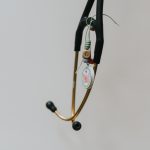Share
The road to resolution
Back to MessengerRead time: 2 minutes
In the latest Professional Conduct Corner, find out why complaint resolution is a good thing
By Noela Inions, CPSA Associate Complaints Director, Resolution
While most physicians will receive a complaint sometime during their careers, there is still worry and fear around the process. This is understandable, but it’s important to keep in mind that CPSA is a learning organization. A complaint does not automatically mean a hearing or disciplinary action. In fact, only around two per cent of the complaints we receive proceed to a formal disciplinary hearing.
When CPSA receives a complaint about a regulated member and collects the required records and information (including a response from the regulated member), our Complaints Director reviews everything and determines next steps, such as dismissal, expert peer review or investigation. When a complaint is addressed by expert peer review, investigation or both, our Complaints Director may decide to direct the complaint to consensual resolution (“resolution”). Approximately 10 per cent of complaints received by CPSA end up in resolution.
Although resolution can occur at any stage of the complaints process, resolution after an investigation is the focus of this Professional Conduct Corner.
What does resolution look like?

Resolution is a confidential process, where our team works with the regulated member and the complainant to resolve the complaint to the satisfaction of both parties.
Both the complainant and the regulated member must agree to the process and the proposed resolution, which involves communication between them (either directly or indirectly through legal counsel and facilitated by CPSA’s team). This allows both parties to have input into the outcome while developing a better understanding of the actions of the regulated member and what led to the complaint.
Resolution is focused on learning and practice improvements. With consent from the complainant, the regulated member agrees to make certain practice improvements or complete specific educational or remedial initiatives to avoid a reoccurrence of what led to the complaint and improve care going forward.
Positive, lasting outcomes
Resolution involves elements of restorative justice and enables understanding, acceptance and healing between the parties. Based on feedback, complainants who participate in resolution are more likely to be satisfied with the outcome of their complaint, as they feel they have been heard and have achieved a meaningful outcome. Physicians can gain valuable insight into the impact of their patient care or behaviour, as well as the perceptions of patients and others, and use that feedback to enhance their practice.
Resolution often has similar outcomes to other processes but takes less time, which means learnings can be implemented sooner and better care can be provided faster. This approach also brings closure to the process—as the parties have agreed to the outcome, there is no appeal or review and the complaints process is concluded.
It is normal to feel anxious about complaints, but they are an important part of maintaining accountability in a self-regulated profession. When the circumstances of a complaint allow for resolution, physician practice and patient care improve—an outcome everyone can feel good about.
For more information about our complaints process, please visit our website.
Related News
All News & EventsApril 10, 2025
Medical Matters: Promoting infection prevention and control in Alberta’s medical clinics
April 10, 2025
Continuing medical education and professional development opportunities – April 2025
April 10, 2025
Keeping up with Council: March 2025
April 10, 2025




















Comments for this post are now closed. If you would like to share your feedback on this topic, please email support@cpsa.ca.